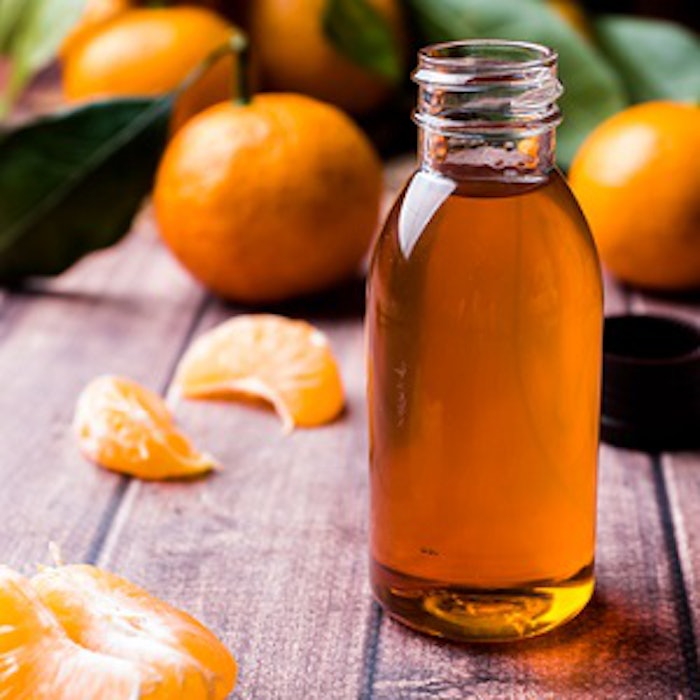
All citrus oils have a great deal in common. Their major components are nearly identical. Orange, grapefruit, tangerine and mandarin all have d-limonene, myrcene and pinenes as their major constituents (more than 95%). It is fascinating that these citrus oils are so easily distinguished by their odor alone. Why is this the case?
In particular, mandarin or tangerine oils (Citrus reticulata) are quite distinctive and have been the subject of studies for years. There has been a recent push to develop and market a hybrid of mandarin and sweet orange, so-called Halosa, that is set apart from the previously well-known brand called Cuties. The new hybrid is significantly larger, seedless, a bit sweeter and easier to peel. While these advantages are obvious to a consumer, the real flavor components that contribute to its character are not well-known or understood.
Those in the flavor and fragrance industry agree the major components of limonene, myrcene, and α- and β-pinenes are not the character-donating ingredients. The character, in fact, comes from the delicate balance and blend of some 100 additional components that occur in both the peel and the juice. While no commercial peel oil extract of the new hybrid is available, the recent market appearance of its fruit provided an opportunity for exploration and research. In unpublished work, this author previously examined the smaller variety of clementines and here, compares the new hybrid along with sweet and sour orange, mandarin orange and tangerine.











